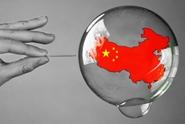Government/Policy

September 12, 2016
DOC Preliminary Determination on Stainless Steel & Strip from China is Affirmative
Written by Sandy Williams
The Department of Commerce announced an affirmative preliminary decision in the investigation of dumping of imports of stainless steel and strip from China. The China-wide rate assigned was 76.64 percent due to a failure of producers and exporters to respond to Commerce’s request for information. Non-selected separate rate respondents received a dumping rate of 63.86 percent.
The Sept. 12 decision finds that dumping occurred by mandatory respondents Shanxi Taigang Stainless Steel Co., Ltd. and Tianjin Taigang Daming Metal Product Co., Ltd. but that the respondents were not eligible for a separate rate and, therefore, were assigned the China-wide rate.
The rate designations in this investigation can be confusing. Because China is a non-market economy, the DOC can conduct a Separate Rate Investigation or Review, in which it determines whether exporters applying for a separate rate are qualified. The criteria, in short, requires that the company’s exports not be governmentally controlled. The two companies mentioned above who applied for the separate rate did not meet the criteria so they received the China-wide rate of 76.64 percent.
Other firms that were found to be independent of government control received the lower dumping rate of 63.86 percent.
The merchandise covered by this investigation is stainless steel sheet and strip, whether in coils or straight lengths.
The petitioners for this investigation are AK Steel, ATI Flat Rolled Products, North American Stainless and Outokumpu Stainless USA.
Next steps:
Commerce will make its final determination November 23, 2016 followed by the ITC final determination of injury on January 7, 2017. If both determinations are in the affirmative, AD orders will be issued by January 14, 2017.







